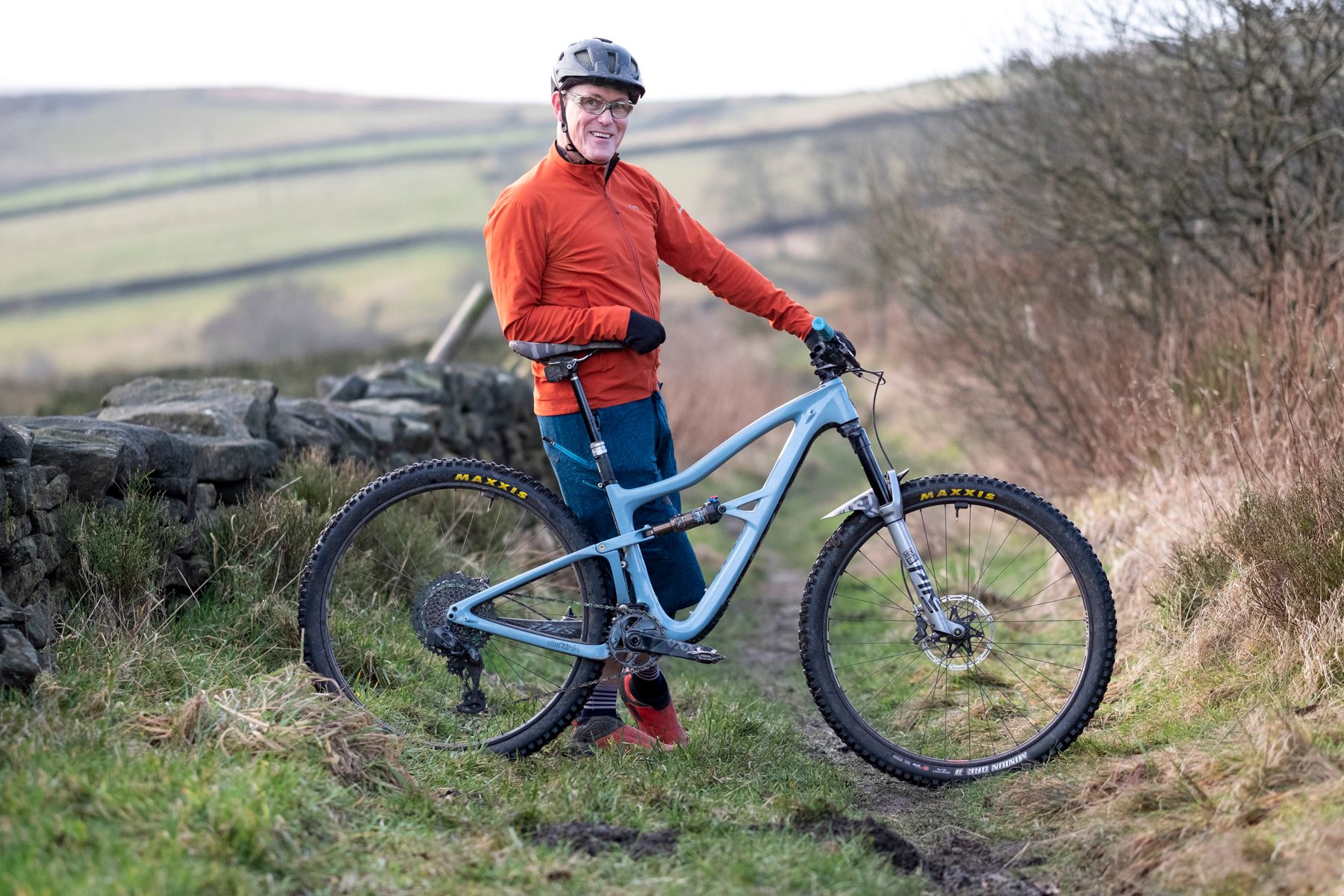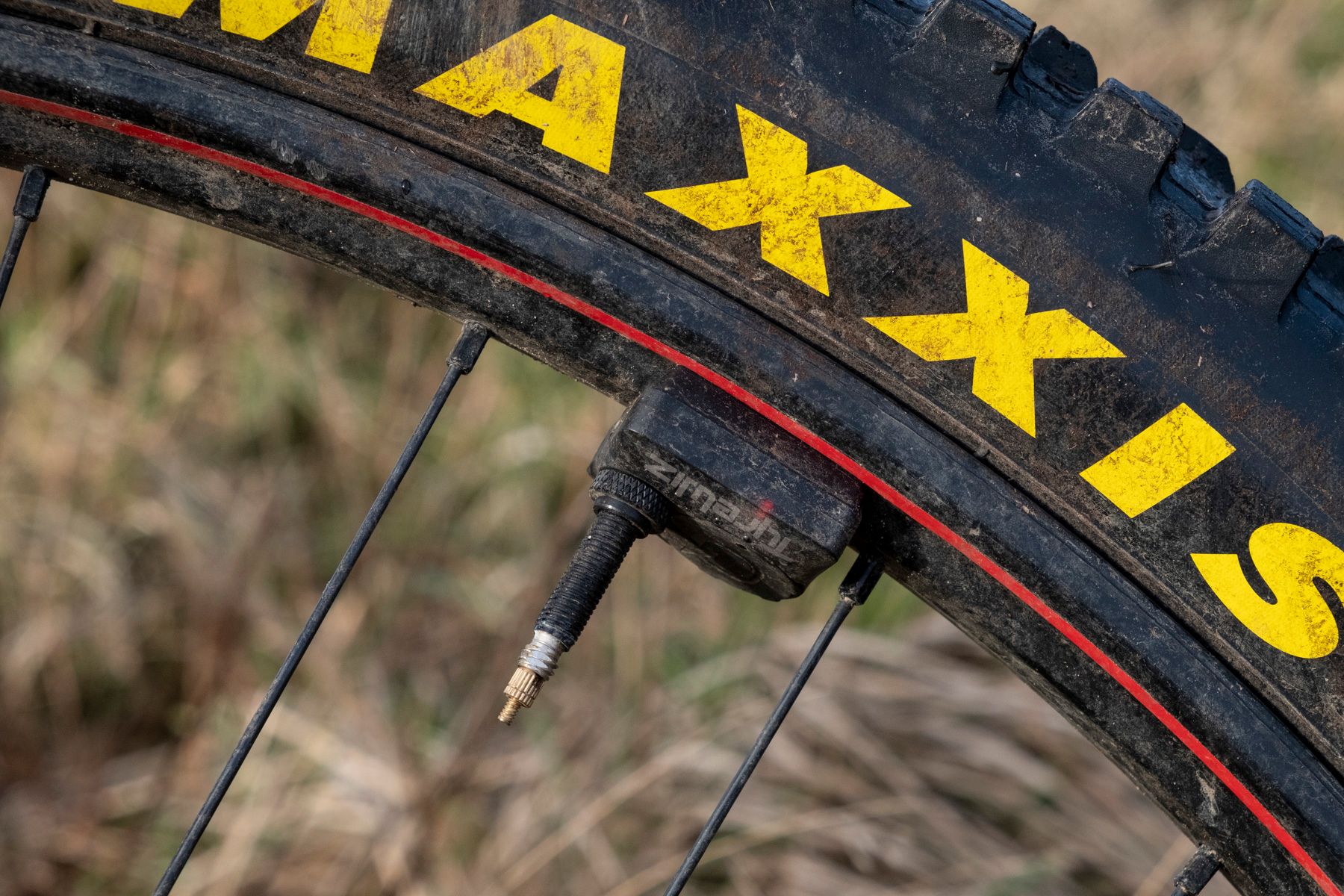This article was first published in Issue 129 of Singletrack Magazine.
The first Ibis Ripley, back in 2001 or so, was an alloy softail, a pretty advanced bike for the time. The Ripleys that followed were equally innovative: the MK2 was the company’s first carbon full suspension 29er. The LS MK3 introduced ‘Long and Slack’ to the range.
You are seeing this message because you are a trade member of our site. This review can only be accessed, ad free, by our full members. If you would like this review to be available to all our 1.6 million website monthly visitors then contact ross@singletrackworld.com. Removing the members paywall and all external advertising will mean this review can be shared on social media and accessed by a wider audience.

The Ripley MK4 was launched back in spring 2019 and I was lucky enough to be on the launch. During a day of hard riding, both up and downhill, we put this new bike through its paces. It challenged what I had felt about many 29ers, that they were lumbering beasts that steamrollered through the trails. With more and more capable, long travel 29ers out there, it was good to see that shorter travel bikes were also getting the love. After my April test ride, I started enquiring about getting hold of one and was told ‘October’. In the end it was November before it turned up – obviously everyone else had had the same idea.
The new Ripley owes the long travel RipMo for many of its new design touches. Previous Ripleys had a clever pair of rotating cylinders that governed the rear axle path. Clever, but they didn’t allow room for longer dropper posts, so those pivots have been replaced by links that move the suspension in the same way. The diminutive frame height (the seat tube is barely 16in) gets its influence from the RipMo too. This allows luxuriously long dropper posts.
My frame turned up around the same time as our test sample of SRAM’s new, wireless AXS Eagle 12-speed and with the marketing directive seemingly to make sure that every magazine editor in the world was riding SRAM’s new flagship, the box turned up with strict instructions that I should put it on my bike. So I did. With the freedom from gear and dropper cables, the bike went together quickly and easily and I was soon out and riding.
The Bike
As you’d imagine with a money-no-object, ‘journo spec’ bike, there’s a lot of fancy stuff to look at on this Ripley. The refreshing thing, though, is that it’s all pretty unobtrusive and allows the rider to just get on with riding and enjoying the trail ahead.

The heart of this bike is a size-medium Ripley in ‘Blue Steel’. It has 29in wheels, a 66.5° head angle, 76° seat angle and a reach of 450mm on a medium (475mm on a large). Ibis reckons that its four sizes will fit riders from 5ft 0in to 6ft 6in. The seat tube is a diminutive 381mm or 15in, so standover is super low and there’s room for long, or longer dropper posts.
The wireless elephant in the room is the SRAM Eagle AXS transmission. This is the full shebang, complete with AXS wireless Reverb too. This consists of the carbon X0 chainset and single Eagle ring, with a rainbow/oil slick chain running over 12 Eagle sprockets on a 10–50T cassette. The dual action thumb shifter is complemented on the left side of the bars by the matching single lever for the Reverb. The lack of wires is noticeable by their absence. It’s a very clean looking set-up with only the now redundant cable routing holes spoiling the aesthetic.
Up front is a Pike Ultimate fork, with 130mm travel to go with the 120mm rear travel. The rear shock is the only non-SRAM moving bit on the bike, with a Fox Float EVOL shock. This gets an Ibis-specific super-light tune, just for the Ripley. More on that in a moment.
Brakes are also from the SRAM stable too, with G2 Ultimate brakes and 180mm rotors. The Zipp MOTO wheels complete the full SRAM slam dunk. The MOTO wheels are intriguing in that they’re a single skin carbon construction, so no hollow spoke bed. Zipp says that this allows the wheels to flex away from impacts and to spread the load. One intriguing, final addition is the TireWiz, which give you wireless information about your tyre pressures.
Other points of the bike are a mix of my favourites as well as whatever I had in the shed. The tyres are a well proven pair of Maxxis Minion DHR, stickier front, rollier rear. The saddle is a fabric/camo DMR OiOi model, which happens to match the AMS mudguard. Finally, the bars and stem are a Truvativ Descendant combo, short and wide, finished off with DMR Deathgrip grips in ‘almost matching’ blue.

As the bike was built up from scratch, there were a few long evenings spent making sure that everything went together well. With full cable lining for the brakes (and obviously unused for the shifting) the bolting together went pretty smoothly. Even SRAM’s wireless AXS Eagle is simple enough if you watch a couple of YouTube videos and actually follow what’s going on. The tyres took a couple of goes to seat, possibly because the single wall rim profile doesn’t really leave a channel for the uninflated tyre to sit in, but a further wrap of tubeless tape seemed to make up the difference enough that the tyres went up fine – and have stayed up since.
The Ride
There’s nothing like finishing a bike on a Friday lunchtime and driving three hours to Wales to ride it on the Saturday, so that’s how the Ripley started off. With minimal attention paid to shock and tyre pressures before riding, it only took a couple of trail stops to get the bike dialled and I’ve done very little fiddling with pressures since. I mostly felt at home on it from the first ride.

Something I did do (halfway round a ride in the middle of Wales) was to swap over the lever functions, which is something that’s surprisingly easy to do with SRAM’s AXS app. Once synced with the bike, it took perhaps 60 seconds to assign the dropper to the top right lever, easier gears to the left-hand lever and harder gears to the lower right. And when another tester rode it, it took the same time to put it back to stock. It’s not something that you’ll do all the time – you’ll find the configuration that you like and stick with it, but it’s a refreshing to have a tech feature that just works.
While we’re talking about the gears, they are very easy to get used to and forget that there’s not a cable connecting shifter with mech. You press a button and the gear shifts. It’s that simple. The AXS Reverb in particular is very impressive. Dropper movements are truly instant and it allows multiple fine adjustments a minute on contouring trails, rather than just ‘up’ and ‘down’. Battery life has been excellent, to the point that it’s not actually a worry. Charge up when you remember and you’ll be fine. And if it all goes wrong, you can swap dropper battery for the mech one to get you home with gears.

Now, for the bike itself. The DW-Link suspension is well proven, and on a spritely bike like the Ripley it seems particularly appropriate. Pedalling efforts see the suspension subtly stiffen up so that a sprint feels like a sprint and not running on a trampoline. For rides where the terrain is rolling up and down, with corners and rocks aplenty – like your favourite trail centre ride – the Ripley is on fire. It rewards an attacking rider with a vigorous ride without punishing a rider who’s just out for a spin. On the gas, it almost feels that you have a tailwind.

As the trail tilts downwards, there’s such a confident manner to the bike. There’s no thinking that there’s ‘only’ 120mm of rear suspension because the bike works as a unit under you and it’s going where you’re going. Unless you’re doing repeated jumbo hucks to flat, you’re unlikely to find a trail it can’t cope with.
And then when you get to the bottom of the trail, you can turn round and ride back up the chunky descent you just came down. The bike’s balance and sense of poise helps you keep your cool on the trickiest of local climbing challenges.
Overall
From my first test ride on a Ripley, I knew that I felt at home on it – 130/120mm 29ers suit the riding I enjoy doing. I love earning my descents on the climbs and I enjoy my descents too, so the Ripley’s excellent climbing manners and confident descending fit me well.

The SRAM AXS has been faultless and as someone who really doesn’t have to have the latest gadgets, I’ve been impressed by how un-gadgety the electronic, wireless shifting and dropper post is once set up. It just works.
As for the bike, I love it. Just enough travel, super light (especially with this spec) with a geometry that is neither too racy nor too downhilly. A Goldilocks kind of bike. If I had a lighter race bike, or an enduro bike with longer travel, I simply wouldn’t go any faster, uphill or down.

Ibis Ripley MK4 – Specification as tested
- Frame Ibis Carbon Fibre, 120mm rear travel
- Fork RockShox Pike Ultimate, 130mm travel
- Shock Fox Float Performance EVOL, Ibis Light Tune
- Hubs Zipp
- Rims Zipp MOTO 29in, 30mm internal
- Tyres Maxxis 29in DHR 2.4in 3D Max Grip EXO front, 2.4in DHR EXO rear
- Cranks SRAM Eagle carbon AXS
- Shifters SRAM Eagle AXS
- Derailleur SRAM Eagle AXS
- Cassette SRAM AXS Eagle 12speed, 10–50T
- Brakes SRAM G2 Ultimate, 180mm rotors
- Stem Truvativ Descendant 40mm
- Bar Truvativ Descendant 800mm
- Grips DMR Deathgrip
- Seatpost RockShox Reverb AXS wireless
- Saddle DMR OiOi
- Size Tested M
- Sizes available S, M, L, XL
- Weight 12.8kg/28.25lbs













Are you on commission from Ibis? That’s the best sales pitch I ever heard! Made me wanna to go buy one! 😉
I’m not, but I must admit that I felt it suited my riding the moment I got on it – and I’ve gone out of my way to hang on to this bike for the moment. The DW Link suspension seems to work well for the kind of ‘active’ climbing and alonging I like to do. Put the power down and the bike tautens and goes. Ease off and it gets plusher. (Kind of like they tried to do with the GT RTS 25 years ago…)
I’ve tried the bigger bikes like the RipMo and they’re great, but they’re more travel than I would regularly use. Other DW Link bikes work in a similar way too – Pivot, for example.